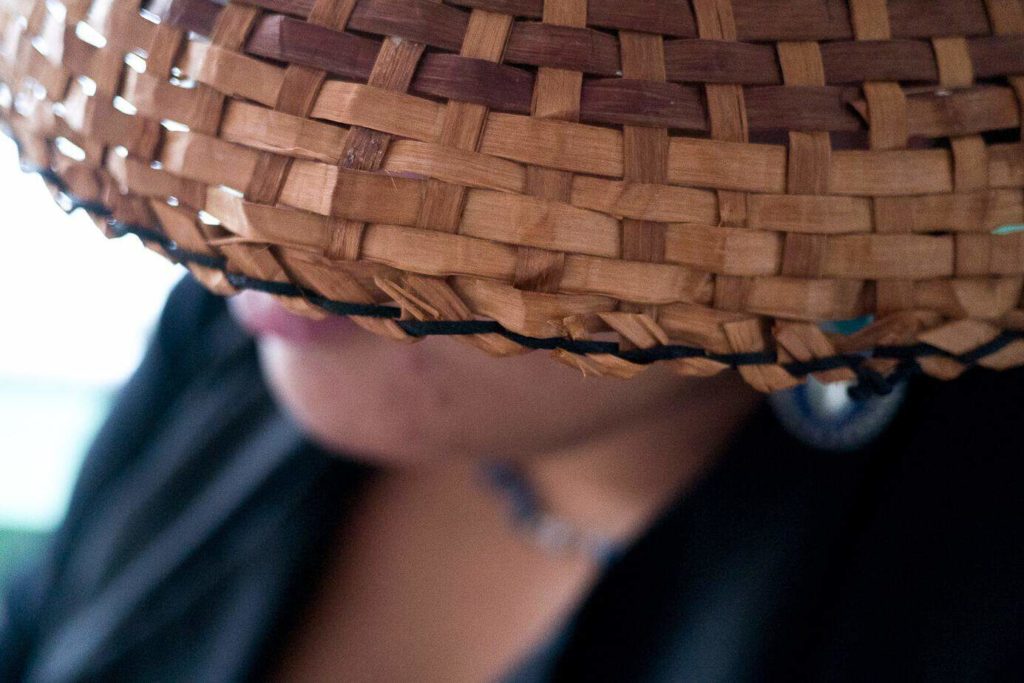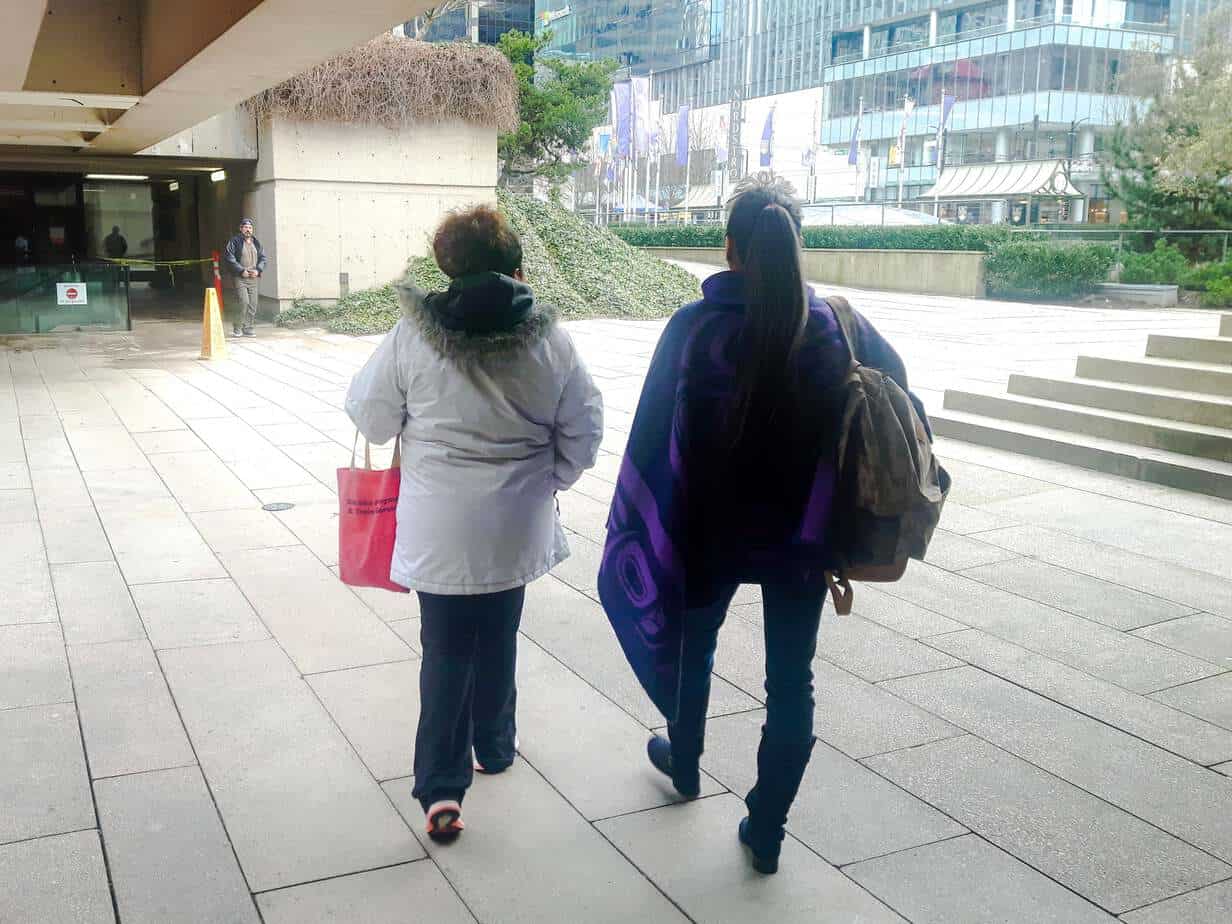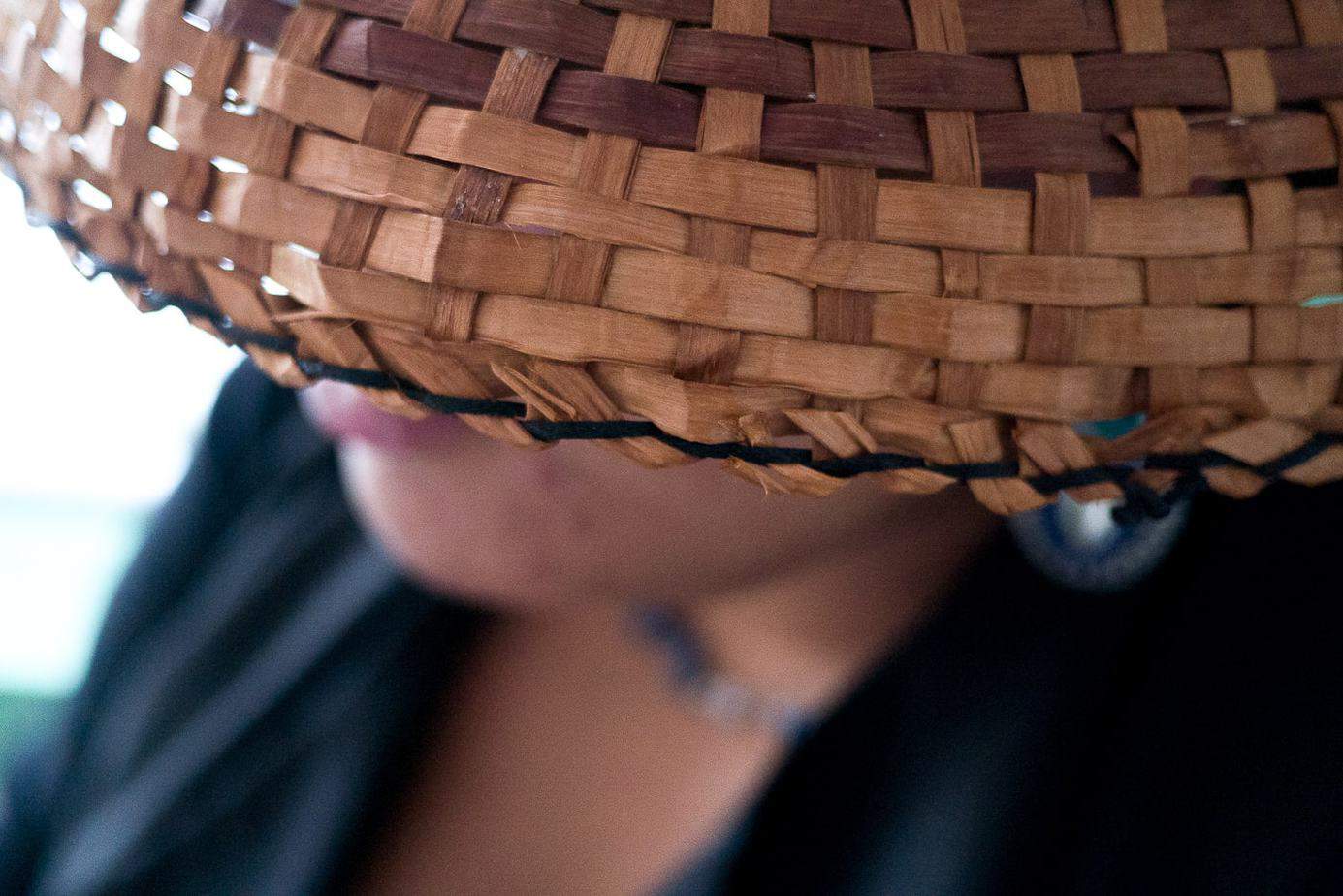
The sprinklers were on and the playground was packed.
It was Aug. 9, 2016. Justine — whose real name Discourse is withholding to protect her children’s identities — loved bringing her kids to their neighbourhood waterpark after picking them up from day camp. “Vanessa” would snooze in her stroller while “Sarah” and “Rosa” played on the monkey bars. But this day was different. By the end of it, all three girls would be gone, swept into foster care.
In Canada’s child welfare system, Indigenous kids are grossly overrepresented.
Though they make up just under eight per cent of kids under 15 years old in Canada, Indigenous kids account for more than half of all kids under 15 in private foster care homes across the country. In B.C., Indigenous children make up 63 per cent of the 7,000 or so kids in care, while in Manitoba, that figure climbs to nearly 90 per cent.
Justine is one of many Indigenous mothers working to get her children out of care. Like dozens of Indigenous parents that Discourse has heard from, she feels under-supported, often ignored and traumatized by the loss of her children, despite recent promises from government leaders to fix the system.
Right now her daughters are in temporary foster homes, but B.C.’s Director of Child Welfare is pushing to place them permanently in care.
While the Ministry of Children and Family Development won’t speak to specific cases, Discourse has interviewed several people who were present at various meetings between Justine and the social workers, who corroborate Justine’s accounts of her family’s treatment and share many of her concerns.
On March 13, 2018, the B.C. Provincial Court will begin hearing her family’s story, and the ministry’s arguments to permanently separate her from her kids.
Justine says she’s fighting not only to get her kids back, but to change a system she believes is biased against her and her whole family.
Mom on trial
Justine’s girls have been in and out of foster care their whole lives: her eldest daughter, “May,” was first apprehended as a baby, in 2004. After a month, she was returned to her mom, under a six-month supervision order. She was apprehended again in 2013 and 2015, along with her younger sisters, “Sarah” and “Rosa” (whose identities Discourse is withholding to protect their privacy).
Over the years, social workers’ concerns for Justine’s children have included “neglect, physical and emotional abuse, substance abuse, and family violence,” according to records obtained by Discourse.
Justine acknowledges that she’s made mistakes as a parent, but says she’s worked hard to improve her skills. She’s sought extensive counselling and completed numerous programs to try to heal herself and her family.
Several support workers interviewed by Discourse have attested to Justine’s progress. While the ministry has described Justine as uncooperative, according to documents obtained by Discourse, Noelle Hanuse remembers her differently. She counselled Justine back in 2015.
“Compared to some of the other parents that I worked with, she showed up for every counselling appointment that we had,” Hanuse says. “She was always reaching out for help.”
On Jan. 7, 2016, after completing 15 counselling sessions with Justine, Hanuse wrote a letter to the Ministry of Children and Family Development.
“In my two years in Child Protection, I have never met a more committed mother who goes above and beyond requirements to better herself as a parent,” reads the letter, which Hanuse says she sent to the ministry. “There is so much wrong with this child removal process and subsequent battle to have Justine’s children returned.”
Hanuse was working for Vancouver Aboriginal Child and Family Services Society — or VACFSS (pronounced VACK-fass) at the time. VACFSS is one of 24 Delegated Aboriginal Agencies in B.C., authorized by the provincial government to deliver child welfare services to Indigenous people living in the Vancouver area. As a Family Support Elder for VACFSS, Hanuse spent three years counselling parents and facilitating workshops with social workers.
Justine got her girls back in April 2016, but her brushes with the ministry were far from over.
On a warm day in August 2016, Justine was at the waterpark with her youngest daughters — Sarah, Rosa, and baby Vanessa — when her phone rang.
[discourseImage id=”7228″ size=”column”]
A VACFSS social worker said she wanted to interview Sarah and Rosa. Justine said she and the girls were at the park together. Two social workers came and Justine watched them walk away with her children.
After waiting a while for them to return, Justine says she got an ugly feeling in her stomach. She texted one of the social workers, who said she and the girls were at a nearby community centre. Justine zigzagged a few blocks over to the centre, where she found the social worker sitting with her team leader. On a table in front of them, a document lay face down.
They told her they were going to take her kids. They alleged that “physical altercations” had occurred between Justine and her teenage daughter, and that Justine had locked Sarah and Rosa in their bedroom and pinched and slapped them, according to a document obtained by Discourse.
Justine says she tried to talk the social workers out of taking the kids, but it didn’t work. She asked if they had formula for Vanessa, who was just a few months old. Until then, Justine says she’d never given the baby formula, only breast milk. The social worker asked Justine if she could give Vanessa one last breastfeed before they took her away.

Justine was tempted to refuse. She didn’t want to cooperate with the social workers. “My brain was telling me I don’t want to do it, but my heart couldn’t let her go without,” she says. “I must have sat there for about 20 minutes … I think I was just singing to baby. I was just singing to her while breastfeeding.”
Then she left. “I guess I could have fought them and ran out with my stroller. I don’t know…”
A year and a half later, May and baby Vanessa are living in two different foster homes, and the middle children, Sarah and Rosa, are living together in a group home.
“I may have a little bit of parenting issues,” Justine acknowledges, “but as far as child abuse, I would never intentionally hurt my kids or hurt any other kids.”
She’s adamant that her girls don’t need protection; what her family needs, she says, is more support.
The Millennium Scoop
Canada has a long history of cutting Indigenous children off from their parents, their grandparents, their community and their culture.
More than 150,000 Indigenous children were taken from their parents and sent to residential schools. During the “Sixties Scoop” thousands of Indigenous children were also pulled out of their families to be adopted into non-Indigenous families or even sold to them. Now many are referring to today’s overrepresentation of Indigenous kids in foster care as the “Millennium Scoop.”
Parents are “being judged by colonial standards, which is so far removed from our traditional way, our traditional world view,” says Hanuse, who worked closely with Indigenous parents and social workers at VACFSS.
“I think their biggest crime is poverty. Poverty shouldn’t be a crime.”
While Canada has apologized for the residential schools, Indigenous and non-Indigenous leaders say that true reconciliation will remain out of reach until the foster care system is fixed.
The first five recommendations of the Truth and Reconciliation Commission’s 94 Calls to Action are focused on reforming the child welfare system. They call on federal, provincial and territorial governments to provide “adequate resources to enable Aboriginal communities and child-welfare organizations to keep Aboriginal families together.”
Across the country, Indigenous leaders are calling attention to the link between poverty and the foster care system. Under Cindy Blackstock’s leadership, the First Nations Child and Family Caring Society has been lobbying the federal government to fund Aboriginal kids on reserve at the same level as kids elsewhere.
Together with the Assembly of First Nations, the Caring Society filed a complaint with the Canadian Human Rights Tribunal saying the federal government discriminates against First Nations children on reserve. The tribunal agreed in 2016 — and Indigenous leaders have been demanding accountability ever since.
The federal government has promised to take action. At a two-day “emergency” meeting in January 2018, the government presented a six-point plan to address critical gaps in the child welfare system. “Let’s just be real about the racism and the discrimination that’s going on,” said Carolyn Bennett, the minister of Crown-Indigenous relations.
“This has to stop,” added Jane Philpott, the minister of Indigenous services. “Children have to be with their families and communities unless it is absolutely impossible to find another solution.”
Justine has been pushing for a different solution for years. Instead of separating kids from parents, she believes the system should prioritize supporting Indigenous families as they heal from their intergenerational trauma.
[discourseImage id=”7223″ size=”column”]
A survivor of foster care herself, Justine spent her childhood shifting between homes, in and out of care. Her mother is a residential school survivor. Generation after generation, children have been taken from their family.
“I had requested that my family go to trauma therapy,” she says. “That’s something that I really wanted. They didn’t listen to me.”
Hanuse and several support workers say they remember Justine asking repeatedly for her family to receive trauma treatment together.
A spokesperson for the Ministry of Children and Family Development says whole-family trauma treatment is possible, but often complicated in child protection cases by supervision and access questions.
Justine still can’t understand why her family didn’t get the help she was asking for. “I felt like they’re standing there just watching me fail with my kids.”
Last summer, she filed a complaint with B.C.’s Human Rights Tribunal, alleging that VACFSS discriminated against her as a black and Indigenous woman living with multiple disabilities. The tribunal has agreed to hear her complaint, though a hearing date has not yet been scheduled.
“I don’t want my four daughters fighting the same battle I’m fighting today for my children to keep them out of foster care,” she says. “I kind of feel like sharing my story is a way to help me heal myself.”
When your children are attempting suicide in foster care
On May 29, 2017, Justine says a social worker called to tell her that a foster parent had found her eight-year-old daughter Sarah alone in her room with a bag tied around her neck.
Justine rushed to the hospital where Sarah had been admitted. Of all her children, Justine sees herself the most in Sarah. She describes her as an “extremely social butterfly.” Someone who speaks up for herself and tries to include everyone in everything. “Maybe the next Angela Davis.”
Just a few weeks before her suicide attempt, Justine says Sarah insisted on celebrating her eighth birthday with a party and cake at the Downtown Eastside Women’s Centre, so she could “share it with all those women.”
At the hospital, Justine says she asked Sarah what happened. “She didn’t really want to talk about it,” Justine says. “And I didn’t want to poke it too much, just because even if I do open the can of worms, I’m not there to comfort her at night time.”

According to Jeff Rud, a spokesperson for B.C.’s Representative for Children and Youth, there were 111 suicide attempts by kids in government care between April 2017 and January 2018 — 78 attempts were by Indigenous children. The RCY defines a suicide attempt as “a serious expression of intent and close proximity to a potentially injurious means.”
When Justine got home from the hospital, she posted a photo of herself and her daughter on Facebook. She wrote that Sarah had attempted suicide while in care. And she asked friends and family for support.
Several days later, Justine met with with the social workers from VACFSS.
Whenever Justine meets with VACFSS child protection workers, she likes to have people she trusts by her side — as witnesses. For this meeting, she invited her auntie and a couple of family support workers from different community organizations to join her.
“I was like, I’m not going to leave until I know what her mental health plan is,” Justine says.
The VACFSS social workers said they were referring Sarah to the Child and Adolescent Response Team — a short-term mental health support service. They also, according to Justine and others present at the meeting, expressed concern about her Facebook post, saying it violated her daughter’s privacy rights.
Justine took the post down, but says she doesn’t regret posting it. “If [Sarah] doesn’t have the proper help and support, how is she even going to make it to an adult?” she asks. “How is she even going to get there?”
Five months after Sarah tried to kill herself, her 14-year-old sister drank bleach.
Justine says she learned about the incident a couple of days after it happened, during another group meeting with VACFSS. According to Justine and two support workers who were present at the meeting, the social worker said May was treated for drinking bleach at a hospital and was back at school the next day.
“I was shocked. And then I was really angry because I felt like I should have been notified about it immediately,” Justine says. “I feel that if the kids were in my care, I would be held accountable. Why are they not being held accountable?”
[discourseImage id=”7222″ size=”column”]
Discourse asked the head of VACFSS, Bernadette Spence, to explain the agency’s policies and procedures, but she declined to comment. “It is not our practice and against our protocol with the Director of CFCSa [the Child, Family and Community Service Act] to comment on our practice associated with a person served,” she wrote in an email.
All media requests to VACFSS need to go through the Ministry of Children and Family Development, says ministry spokesperson Shawn Larabee.
In an email to Discourse, Larabee explains how the ministry responds when a child tries to commit suicide in care.
Treatment such as medical or psychiatric care is immediately provided, he writes.
“Mental health professionals, such as a child and youth mental health clinician, then assesses the child’s risk of further suicide attempts and collaborates with others, such as the guardianship social [worker], family, caregivers and community, to develop and implement a treatment plan to address mental health issues.”
As for the foster home, Larabee says strict guidelines exist to keep kids safe. When someone raises concerns about a particular foster home, the ministry will “take steps to investigate those concerns and address them.” They’ll also notify the child’s parents and let them know about next steps — including any changes in accommodation.
He says there are a number of checks and balances in place to keep Delegated Aboriginal Agencies like VACFSS accountable, including the possibility of a review.
In November 2016, six months before Sarah’s suicide attempt, Justine asked the ministry to conduct an administrative review on VACFSS, citing several concerns with the care her children were receiving.
Five months later, in April 2017, she received a copy of the ministry’s review. The ministry found VACFSS had treated Justine’s family fairly. No recommendations were made.[end]
More from this series:

An Indigenous mom’s fight to get her kids out of a foster care system she calls biased
Trauma or not, this Indigenous mother’s unfit, ministry tells court
Psychologists are using biased tests to assess Indigenous parents, experts say
Government witness ‘not qualified’ to testify in child-protection trial, judge rules
When your child-protection trial is “To Be Continued…”
Judge asks: Should a mother lose her kids because she challenges the foster-care system?
B.C. judge breaks with convention in Indigenous child-protection case
B.C. Human Rights Tribunal will hear Indigenous mother’s case against child-welfare agency
This Indigenous mom’s two-front fight might be gaining ground
‘Justine’ to get her girls back from foster care
Justine’s custody hearing starts March 13, 2018, in Robson Square Provincial Court in Vancouver. Follow Brielle’s coverage of the hearing (hashtag #MomOnTrial), and subscribe to her bi-weekly newsletter for more on this developing story.
This piece was edited by Robin Perelle, with fact-checking and copy editing by Jonathan von Ofenheim. The video was produced by Lauren Kaljur. Discourse’s executive editor is Rachel Nixon.



